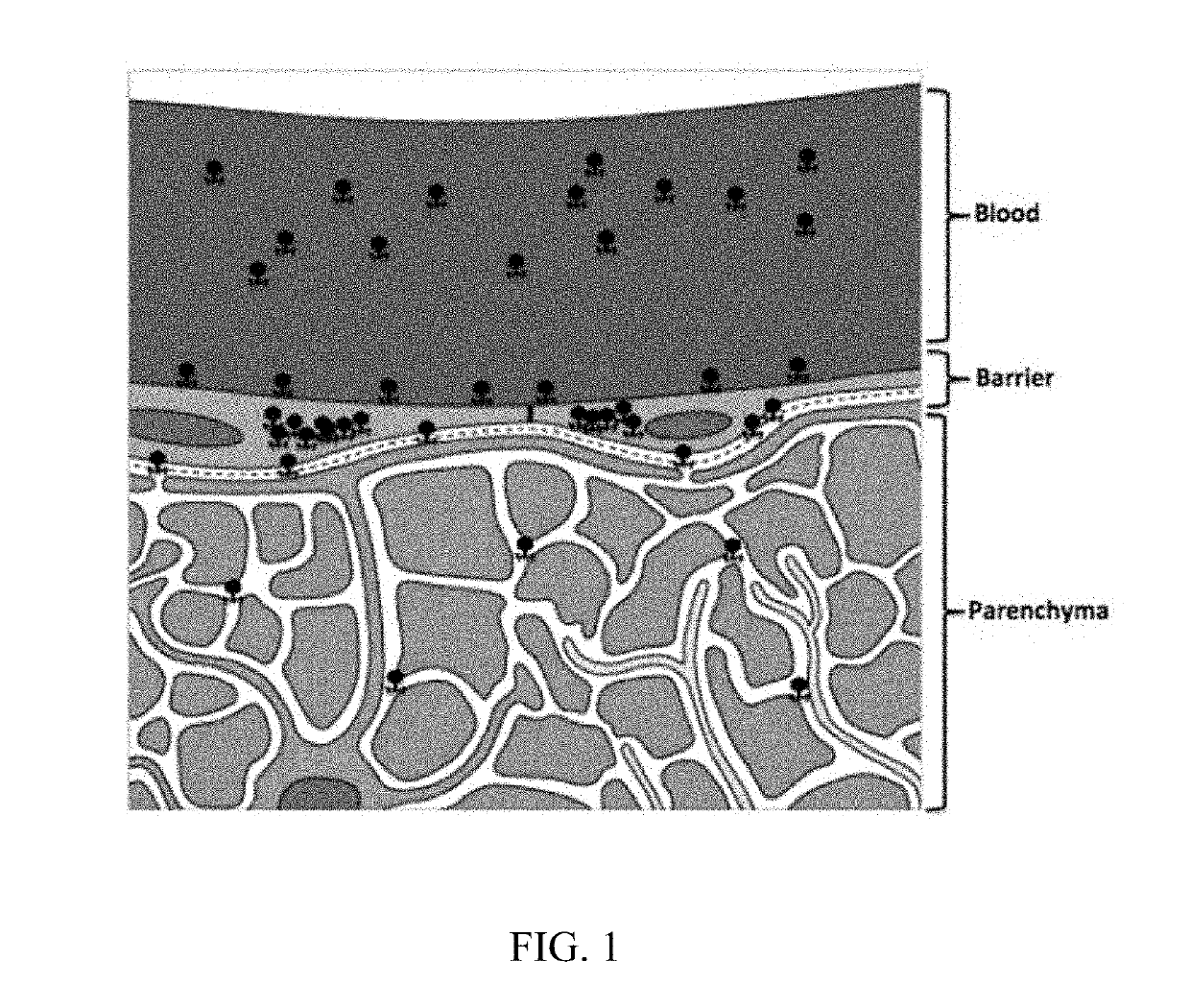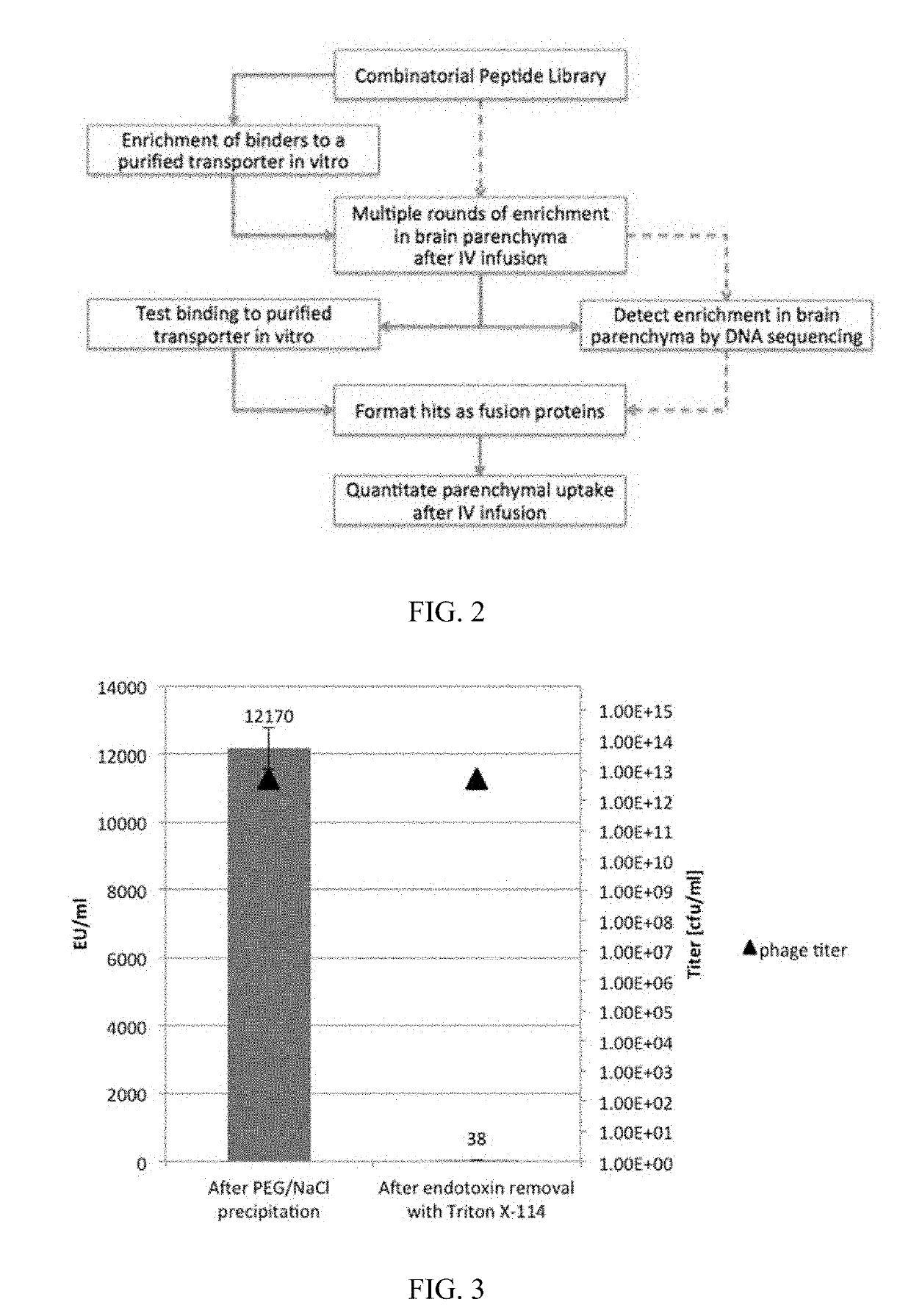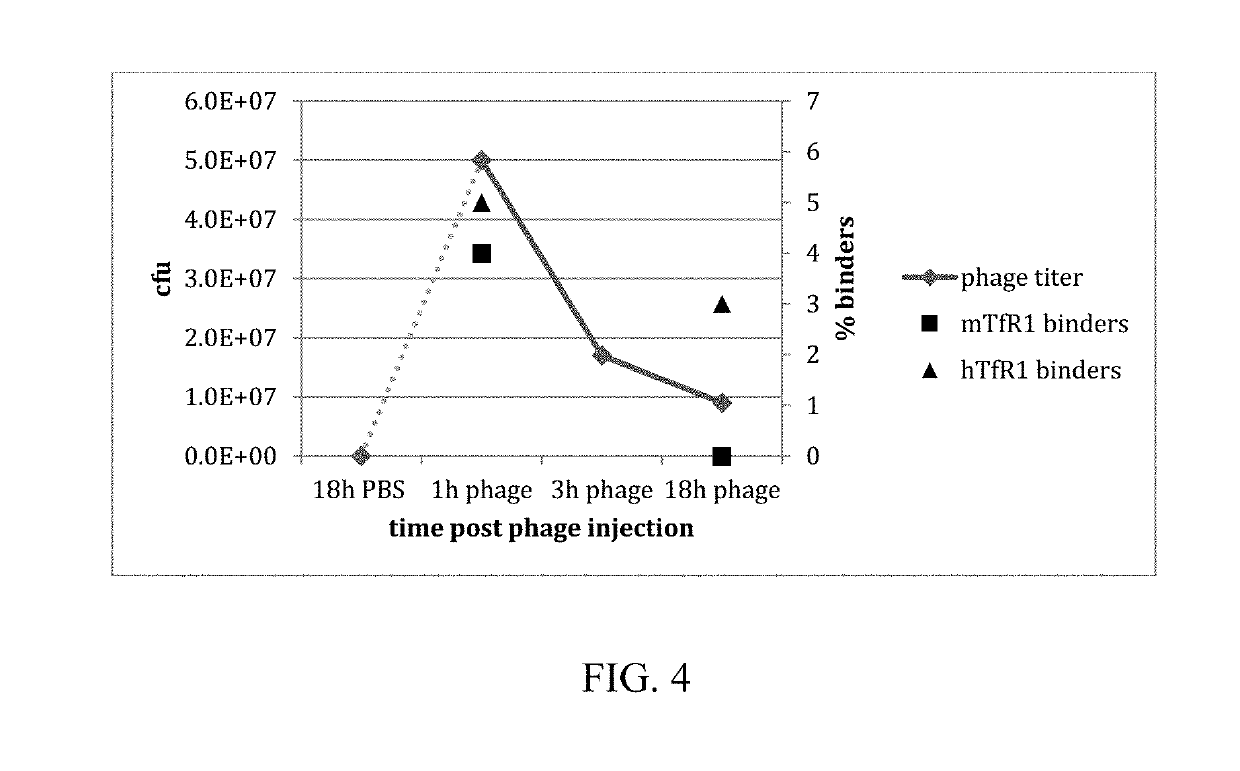In Vivo Methods for Selecting Peptides that Cross the Blood Brain Barrier, Related Compositions and Methods of Use
a peptide and brain barrier technology, applied in the field of molecular medicine and targeted delivery of therapeutic or diagnostic agents, can solve the problems of insufficient target targeting of endothelial cells, inability to reach many therapeutic targets, and formidable obstacle to the systemic delivery of many potentially important therapeutic and diagnostic agents, etc., and achieves the effect of high specificity, greater efficiency and high efficiency
- Summary
- Abstract
- Description
- Claims
- Application Information
AI Technical Summary
Benefits of technology
Problems solved by technology
Method used
Image
Examples
example 1
Phage Display for TfR1 Binding VNARs and In Vivo Selection for Blood Brain Barrier Penetrants
[0236]Recombinant human TfR1 protein was used for in vitro phage display to raise specific VNARs. Two pre-mixed semi-synthetic libraries, OsX-3 and OsX-4 were used. The libraries differed in the framework as well as the length of CDR3 region. OsX-3 and OsX-4 libraries were based on type II and type I nurse shark VNAR sequences, respectively. OsX-3 had mutations introduced to the framework with CDR3 length of 11-18 residues, whereas OsX-4 contained extended CDR3 region with up to 32 residues in length. Two rounds of in vitro phage display selection with fixed 100 nM TfR1 concentration were performed with outputs of 4×107 cfu and 2×107 cfu after first and second round of selection, respectively. The rescued phages from the second round of selection were PEG / NaCl precipitated in preparation for in vivo selection of brain penetrating phages. Although PEG / NaCl precipitation was reported as an eff...
example 2
sis and Validation of Combinatorial Selection Strategy for TfR1-Based Blood Brain Barrier Penetrants
[0242]Next generation sequencing (NGS) was used to validate the selection strategy. By sequencing the phage outputs from each round of selection as well as of the starting library, we were able to gain insight into the process of selection and to assess its validity. NGS produced approximately 670,000 to 1,400,000 sequences depending on the sample (Table 4). Unique sequences were gradually reduced with each of the in vitro and in vivo rounds, from approximately 90% to <80%. The reduction of diversity of slightly more than 10% was lower than expected and wasn't confirming the selection process. However, when the abundance of individual clones was tracked, the validity of the selection process became more apparent.
TABLE 4Quality and complexity analysis of next generation sequencing reads.OSX3 / 4In vitroIn vitroIn vivoIn vivoIn vivomixR1R2R1R2R3Total8196078822411395033613760947768669022To...
example 3
t of Blood Brain Barrier Penetration by Selected VNAR-Fc Formatted Constructs
[0247]All eight clones that were found by colony picking and then confirmed by binding to TfR1 as VNAR-Fcs were further tested in animal experiments for their blood brain barrier penetration ability. Five animals per group were used. Mice were intravenously injected with 25 nmol / kg (approximately 2 mg / kg) of purified VNAR-Fc constructs and the brains were collected 18 hours post injection. The whole brains were homogenised in 1% Triton X-100 and used for ELISA with anti-Fc capture and detection antibody. Standard curves were prepared individually for each of the molecules to assure accuracy of the calculated concentrations. In total, two separate experiments were performed to cover all eight constructs. Control VNAR-Fc that binds at nM concentration to TfR1 but lacks a blood brain penetration property was used as negative control. Clone 10 showed over 10-fold higher signal than the negative control reaching...
PUM
| Property | Measurement | Unit |
|---|---|---|
| MW | aaaaa | aaaaa |
| pH | aaaaa | aaaaa |
| pH | aaaaa | aaaaa |
Abstract
Description
Claims
Application Information
 Login to View More
Login to View More - R&D
- Intellectual Property
- Life Sciences
- Materials
- Tech Scout
- Unparalleled Data Quality
- Higher Quality Content
- 60% Fewer Hallucinations
Browse by: Latest US Patents, China's latest patents, Technical Efficacy Thesaurus, Application Domain, Technology Topic, Popular Technical Reports.
© 2025 PatSnap. All rights reserved.Legal|Privacy policy|Modern Slavery Act Transparency Statement|Sitemap|About US| Contact US: help@patsnap.com



